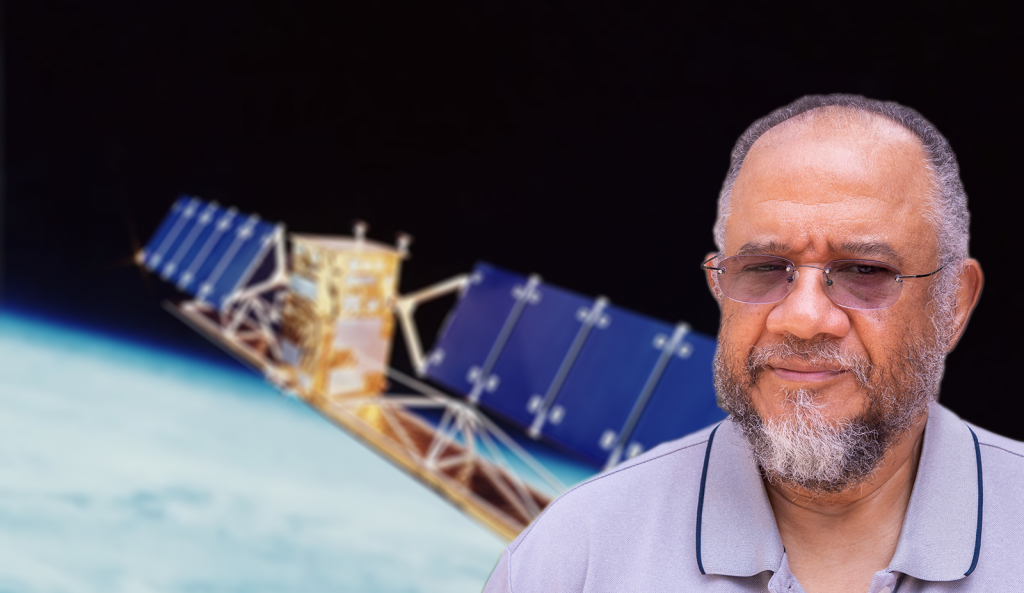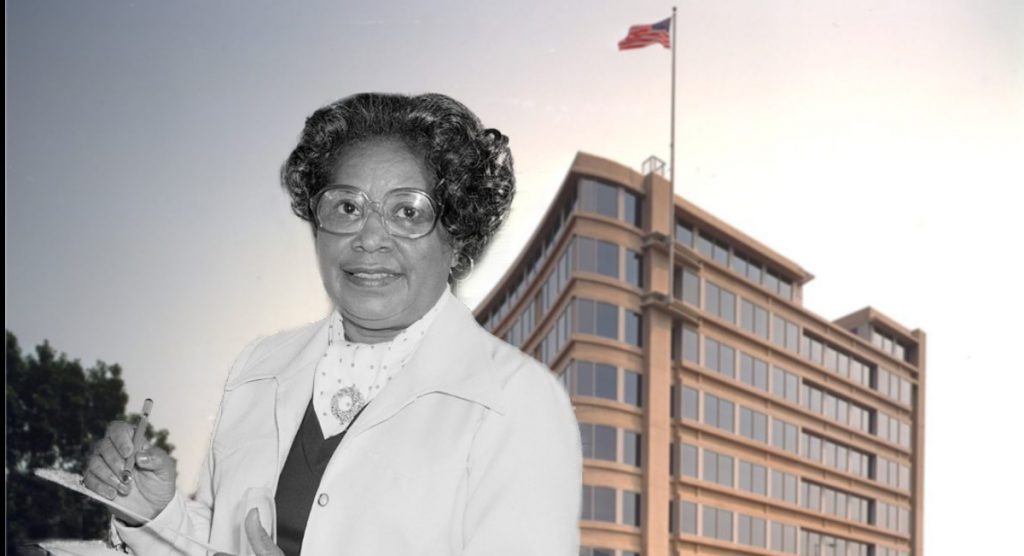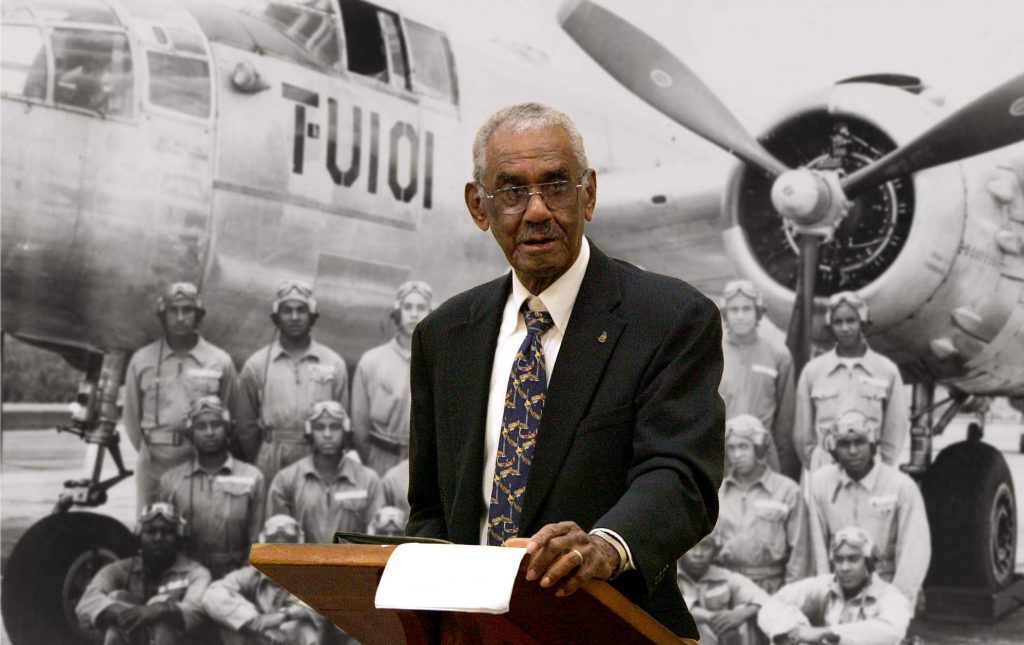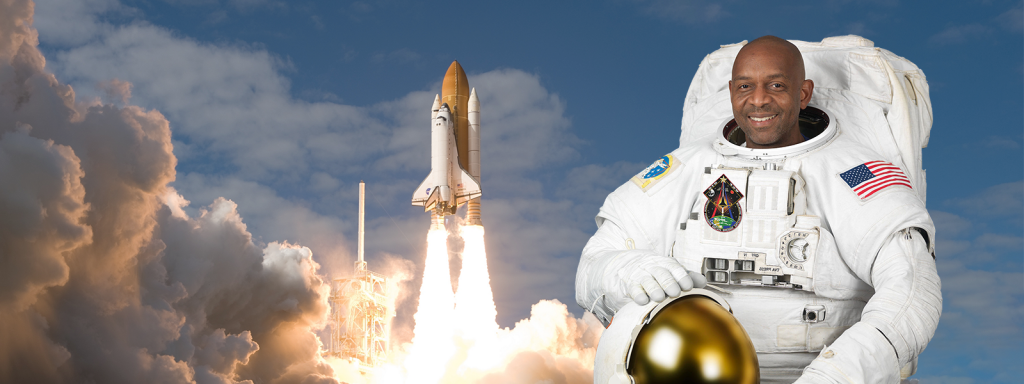Norman Fitz-Coy

Who inspires aerospace engineers? Elon Musk. Neil Armstrong. The Wright brothers. Perhaps Robert H. Goddard or George Cayley. Who inspires black aerospace engineers?
Growing up in Jamaica, Norman Fitz-Coy didn’t have any engineers in his family. He didn’t know any rocket scientists. He just wanted to work with aircrafts. And now, he does. But his path to working his dream job required extra self-motivation and “luck,” as he put it, than it does for many white engineers.
Fitz-Coy moved to the U.S. at 19 to study engineering at Auburn University. He stayed to receive his Ph.D. in 1990 in aerospace engineering. Since childhood, his heart has always been set in the sky, though his interests have shifted from helicopters to fixed-wing airplanes to spacecrafts — his current forte.
“Spacecrafts are really cool. That’s all there is to it,” he said.
Currently, his research is focused on characterizing fragments from on-orbit spacecraft collisions to get a better picture of the space trash that could potentially jeopardize other satellites. He and his team built a model craft and blew it up in a testing facility in Tennessee. They’ve collected around 230,000 fragments from the collision and are working to sort them by mass, shape and size.
So far, they’ve found that a significant portion of the broken pieces came from the newest materials — thin carbon-fiber elements that aren’t accounted for in current collision models. Studying the way the new materials break apart due to space collisions will allow scientists to tailor their models and minimize future impact from space debris.
Fitz-Coy’s career has been propelled by his passion. “It’s been a good ride,” he said, looking back on his life. But when recounting his origin story, he struggled to identify a single role model or figure he looked up to in the field. He admitted that this is evidence of a larger issue — the vast underrepresentation of people of color in STEM adds an additional hurdle for minority children. It’s hard for kids to chase their dreams if their heroes don’t look like them, he added.
While there are many actionable steps needed to level the playing field, acknowledging racial disparities and highlighting the work of diverse individuals is a start. By recognizing the success and fulfillment of engineers like Fitz-Coy, who had to motivate and embolden himself, we at MAE hope to inspire future leaders and dream-chasers of diverse backgrounds.
“My biggest advice: Focus on the things that are close to your heart. If there’s something you’re passionate about, go after it with all that you have,” Fitz-Coy said. “It worked out for me.”
Mary Jackson

In June, NASA announced that the agency headquarters in Washington, D.C. would be named after Mary W. Jackson, the organization’s first African American female engineer. With degrees in mathematics and the physical sciences from Hampton Institute, Jackson worked as a math teacher, bookkeeper and secretary before being recruited by the agency now known as NASA. After receiving permission from classmates in her segregated school, she completed the coursework required for her promotion to aerospace engineer in 1958. She died at 101.
Working in the 4×4 supersonic pressure tunnel, Jackson authored 12 research reports and set the stage for future generations of Black female aerospace engineers. In 2016, she was posthumously awarded the Congressional Gold Medal and also recognized in the blockbuster film “Hidden Figures” with her colleagues Katherine Johnson and Dorothy Vaughan.
All too often, Black engineers are overshadowed, and their contributions are indeed hidden. We recognize Mary Jackson’s courage and talents that allowed her to jump over hurdles and break down barriers. MAE faculty and staff will gather on Wednesday to watch the critically acclaimed movie that highlights the work of these hidden figures at NASA.
Stephen Lawrence

In June, Gainesville lost a hero. His name was Stephen Lawrence, and he served with the Tuskegee Airmen as a mechanic from 1943 to 1947. After his service, Lawrence moved to Alachua County, where he worked as an ordained minister and Publix clerk. He died at 98.
Lawrence was one of several former Tuskegee Airmen in the area, and there’s even a Central Florida chapter of Tuskegee Airmen, Inc., which honors the group’s legacy and invests in the next generation of aerospace professionals. Confronting the widespread racism of post-WWII America, the African Americans in the Tuskegee Airmen pushed through adversity to become the first Black pilots in the U.S. armed forces. To recognize the hardships they faced, the men are often credited with fighting “two wars” — fascism abroad and racism back home. While Black Americans continue to battle systemic oppression, the remarkable feats of the Tuskegee Airmen, which earned them the Congressional Gold Medal in 2007, paved the path for the formal desegregation of the U.S. Armed Forces by Harry Truman in 1948.
The Mechanical and Aerospace Engineering Department at UF commends the pioneering work of these aeronautic heroes, including those living in our community, for opening the doors for African American aviation.
Dr. Robert Satcher Jr.

In 2009, Dr. Robert Satcher, Jr. became the first orthopedic surgeon in space. He completed an orthopedic oncology fellowship at the University of Florida nine years prior.
Satcher received his B.S. and Ph.D. in chemical engineering from the Massachusetts Institute of Technology and his M.D. from Harvard Medical School. After being selected by NASA to work on space shuttles, he served on the STS-129 craft as a mission specialist in 2009, logging almost 260 hours in space. Using his surgeon skills, Satcher repaired robotic arms on the space station exterior during his two spacewalks. He was the 14th African American to travel to space.
The engineer-astronaut-doctor is now an associate professor at the University of Texas MD Anderson Cancer Center in the department of orthopaedic oncology. In addition to lecturing and research, Satcher is working on constructing a cancer center in sub-Saharan Africa. He has published over 60 scientific papers, including a 1999 article addressing the lack of racial diversity in orthopaedic surgery. The underrepresentation of African Americans bleeds through to Satcher’s other professions as well — throughout engineering disciplines and in space.
To date, the 339 Americans who have been to space includes only 15 African Americans. This Black History Month, UF MAE recognizes the racial inequalities that continue to hinder black astronauts, engineers, doctors and members of our community. We are committed to fostering an inclusive and supportive environment that encourages and equips future pioneers like Dr. Satcher.
